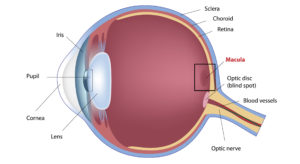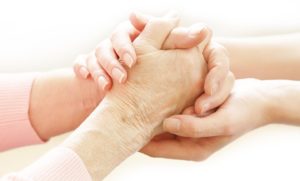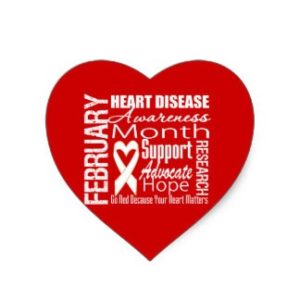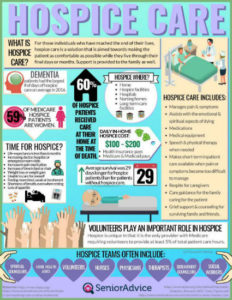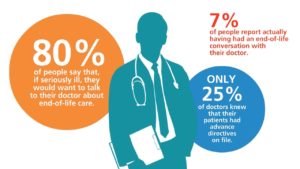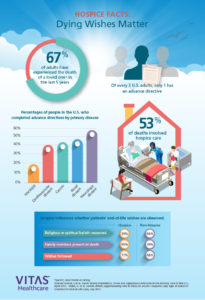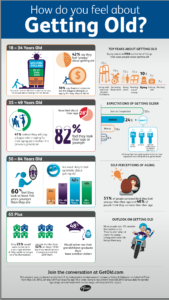Choosing hospice care can be a difficult decision, especially with all the misconceptions surrounding the service. As a result, many who need quality pain and symptom control, as well as social and emotional care, do not take advantage of hospice care. St. Anthony’s Hospice wants you to have the facts so you can make the best decision for you and your loved one. There are so many myths that surround hospice care. We have listed a few as well as the facts that dispel these.

Myth: Families/patients must wait for their physician to suggest hospice care.
Fact: St. Anthony’s Hospice encourages all people to be advocates and explore all their healthcare choices. Anyone can call our office to refer a patient at (270) 826- 2326. We have a referral specialist standing by to answer all your questions and contact your physician for the referral orders, if appropriate.
Myth: Hospice should be called only in the last moments of life.
Fact: The earlier hospice is used, the more benefits patients and families get from the program! Pain and symptom management is more effective when delivered earlier in the disease process. Our number one complaint is that families wish they called St. Anthony’s sooner!
Myth: Hospice is only for the dying patient.
Fact: St. Anthony’s Hospice focuses on the grieving family as much as the patient. We have a team of professionals, including chaplains and social workers, who help with the bereavement process and a variety of other services that benefit the patient’s loved ones before and after their passing.
Myth: My doctor will no longer be my doctor if I become a hospice patient.
Fact: If he/she is willing, your doctor will remain your attending and will become part of the St. Anthony’s Hospice team in caring for you. Our St. Anthony’s staff physicians can also provide care if your doctor is unable to do so.
Myth: Hospice is only for cancer patients.
Fact: Any patient with an end-stage diagnosis can benefit from hospice. These examples include, but are not limited to: HIV/AIDS, end-stage kidney disease, congestive heart failure (CHF), Alzheimer’s/Dementia, cirrhosis, stroke/CVA, chronic obstructive pulmonary disease (COPD), septicemia (sepsis), and others.
Myth: Hospice is expensive.
Fact: Hospice is a benefit under Medicare part A; some private insurances and Medicaid will also cover services. In addition, durable medical equipment, disposable medical equipment, and prescriptions related to the life-limiting condition are covered under these benefits, easing the financial burden on the patients and their families. No person is turned away from St. Anthony’s Hospice due to inability to pay.
Myth: Hospice care is only provided in the patient’s house.
Fact: While many patients who live alone, or with family, receive care in their homes, hospice services are available wherever the patient calls “home.” This means services can be provided in the patient’s house, a nursing home, or assisted living facility. In addition, we also provide services at the Lucy Smith King Care Center, our hospice hospital.
Myth: Hospice is about dying.
Fact: Hospice is about quality of life! When pain and symptoms are managed properly, patients make the most of the time they have left. They are able to spend time with friends, family, and pets in the comfort of their own home while being in control of the care they are receiving. Choosing hospice does not mean the patient is giving up hope or that death is coming soon. Patients often live longer under hospice care since pain and symptoms are under control.
Myth: All hospices are the same.
Fact: While the federal regulations governing hospice programs require the same standard services, that does not mean they are all the same. St. Anthony’s Hospice has been serving the residents of Henderson, Union, and Webster counties since 1982. In 2016, we began our Palliative Care program for those who seek pain and symptom control, while still seeking curative treatments.
Myth: Hospice means I’m going to die soon.
Fact: Many studies have shown the exact opposite! With your symptoms under expert management, studies have shown you can live longer with hospice care (if you are enrolled early enough). Hospice does not hasten death nor does it prolong life. These studies have proven hospice effective in improving quality of life which can sometimes improve quantity of life, compared to those with the same illness but not receiving hospice care.
Myth: Once enrolled in hospice, you cannot get out except when you die.
Fact: You can decide to leave hospice care at any time to pursue aggressive treatments. On the other hand, we have patients who get better with the symptom management and “graduate” from hospice! If you decide to re-enroll in hospice care and still qualify, you can always come back.
Myth: Hospice takes away all medications.
Fact: Hospice care is all about managing symptoms, which we do with medications. This does not mean that hospice care over-medicates patients or removes all medicines. In some cases, we do de-prescribe to reduce the amount of medication the patient will be taking. This is used to reduce medicines with heavy side effects or ones that are simply not benefitting the patient or increasing their quality of life.
If you or a loved one is in need of hospice or palliative care, please call us at (270) 826-2326 or make a referral here.


